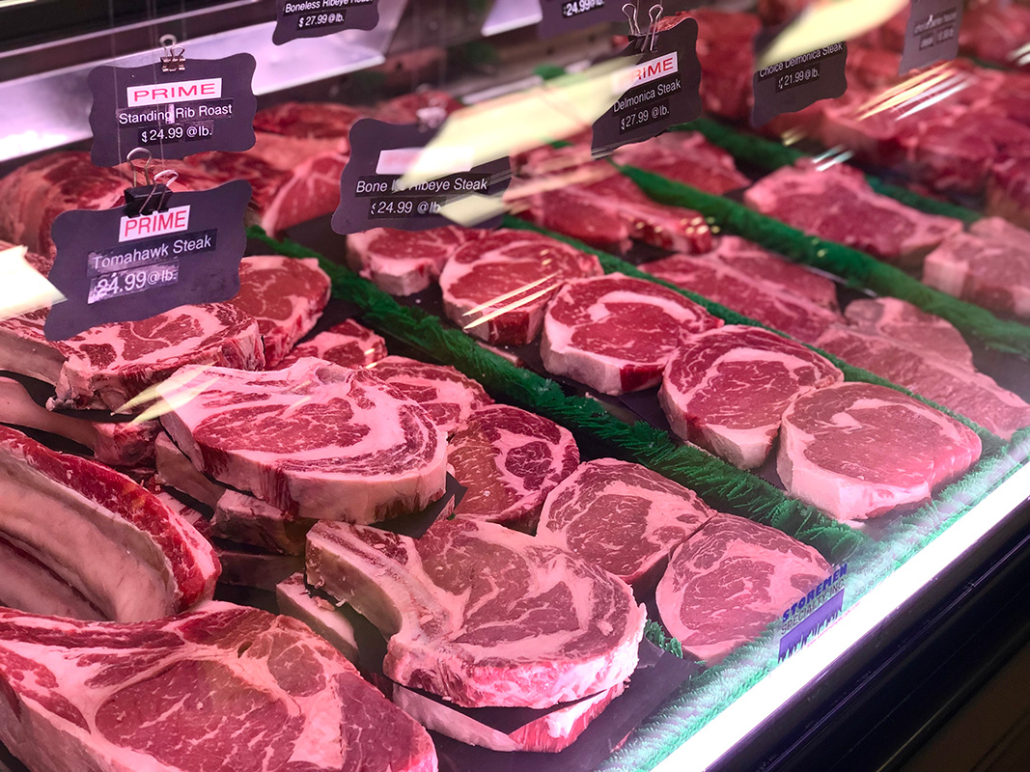Bagley Farms Meat Market Edwardsville IL: Your Go-To Location for Regional Meat Choice
Bagley Farms Meat Market Edwardsville IL: Your Go-To Location for Regional Meat Choice
Blog Article
Discover the Art of the Butcher's Cut in a Modern Meat Market
In the ever-evolving landscape of modern-day meat markets, the butcher's cut has actually transcended its typical origins, merging age-old craftsmanship with modern techniques. Today's butchers are not simply processors of meat; they are well-informed artisans that stress sustainability and honest sourcing. Their know-how in picking and preparing cuts tailored to specific cooking demands uses an unparalleled eating experience. What absolutely sets the modern butcher apart is their capacity to create a deeper link between consumers and the beginnings of their meat. Exactly how do these masters balance practice with development, and what implications does this have for the future of meat intake?
Advancement of Butchery Strategies
The development of butchery strategies shows an abundant tapestry of advancement and adaptation driven by improvements in technology, modifications in customer demand, and a much deeper understanding of meat science. Historically, butchery was a craft passed down via generations, with methods sharpened over centuries to make best use of yield and taste. The industrial transformation ushered in automation, changing standard techniques and enabling massive handling.
The mid-20th century saw butchery strategies further fine-tuned by clinical understandings right into muscle biology and meat aging, enhancing both tenderness and taste. Advancements like vacuum cleaner product packaging and refrigeration extended product shelf-life, enabling butchers to branch out offerings and enhance top quality control. This duration additionally noted the rise of specialized equipment, such as band saws and meat slicers, which enhanced precision and effectiveness in meat processing.

Digital systems currently help in tracking pet provenance and enhancing cuts to meet specific consumer preferences. Additionally, a rebirth in artisanal butchery has emerged, mixing conventional skills with modern-day understanding to cater to customers seeking ethical and lasting meat options.
Understanding Meat Cuts
Recognizing the complexities of meat cuts is crucial for both butchers and customers looking for quality and value. Each cut originates from a different component of the animal, giving distinct tastes, textures, and food preparation methods - bagley farms meat market edwardsville il. Proficiency of these distinctions not only boosts culinary experiences yet also makes the most of the energy of each carcass. For butchers, precise cuts show ability and respect for the craft, making certain minimal waste and ideal return.

Understanding muscular tissue make-up is important; muscles made use of a lot more often by the animal often tend to be tougher and are best matched for sluggish cooking approaches, while less-used muscle mass, like those found in the loin, are a lot more tender and suitable for cooking or roasting. Experience with these distinctions encourages consumers to make enlightened choices, boosting their culinary undertakings.
Choosing Quality Meat
Selecting the right meat entails greater than simply picking an aesthetically appealing item from the display screen. bagley farms meat market edwardsville il. The art of choosing top quality meat needs a critical eye and knowledge of details characteristics that indicate freshness and quality. To start with, pay interest to the shade; beef ought to have an intense, cherry-red shade, while lamb must exhibit a soft pink tone, and pork a pale pink. This suggests the meat is fresh and hasn't been revealed to oxygen for too long.
Secondly, think about the marbling, which refers to the white flecks of fat within the muscle mass. Appropriate marbling is a vital indication of tenderness and flavor, as it melts during cooking, improving the meat's juiciness. Keep in mind, higher marbling commonly associates with exceptional top quality cuts, such as USDA Prime.
Texture you can find out more is another essential variable; meat should feel firm to the touch, not slimed or extremely soft. In addition, be conscious of the aroma. Fresh meat should have a tidy, neutral scent, devoid of any kind of sour or repulsive smells.
Coupling Cuts With Food Preparation Techniques

On the other hand, harder cuts like brisket and chuck roast are abundant in collagen, which breaks down into gelatin when prepared gradually. These cuts are excellent for braising or slow roasting, enabling the meat to soften with time and create deep, complex flavors. Cuts such as short ribs and pork shoulder get on well with slow-cooking techniques, where prolonged cooking times change their durable appearances right into delicious recipes.
Lamb shanks and oxtail, which call for long term food preparation to soften, are excellent prospects for cooking or slow-moving simmering. These approaches coax out abundant, passionate tastes while preserving wetness. By comprehending the one-of-a-kind features of each cut, cooks and home chefs alike can raise their culinary developments, making sure each meal is both satisfying and memorable.
The Butcher's Role Today
Browsing the progressing landscape of the modern meat market, the butcher's duty today prolongs beyond plain preparation of cuts. Contemporary butchers are cooking artisans, educators, and supporters for sustainable techniques. They bridge the void between the ranch and the fork by making sure ethical sourcing, recognizing animal husbandry, and focusing on transparency in the supply chain. This change reflects the expanding consumer need for quality over amount, where provenance and animal well-being are paramount.
Along with crafting exact cuts, butchers currently engage straight with customers, providing cooking suggestions and tailoring choices to match individual requirements and choices. Their competence in meat aging, marbling, and taste profiles equips customers to make informed decisions, improving their cooking experiences. This personalized service exhibits the butcher's advancing role as a trusted consultant in the cooking area.
Moreover, butchers are critical in lessening waste, making use of whole animals to produce diverse items such as sausages and supplies. This thorough approach not only appreciates the animal however additionally straightens with modern sustainability i was reading this goals. By doing this, the modern butcher symbolizes both custom and technology, adjusting to an ever-changing market while preserving the creativity and stability of their craft.
Final Thought
The contemporary butcher's craft delicately weaves traditional strategies with modern-day innovations, emphasizing lasting practices and ethical sourcing. Mastery in comprehending varied meat cuts and quality signs encourages butchers to offer informed suggestions, aligning certain cuts with optimum food preparation approaches. This know-how not just boosts cooking experiences however likewise reinforces the connection in between consumers and the origins of their food. By recognizing historic practices while welcoming contemporary needs, the butcher's you can look here function continues to be crucial in today's sophisticated meat market (bagley farms meat market edwardsville il).
Report this page